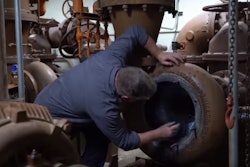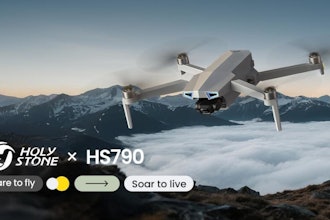Sticking IoT Into Sports Equipment
Everything in sports is quantifiable. Analytics have never been more important to coaches, players, and even fans, but setting up the resources to acquire this data can be extremely expensive. Only the big clubs can afford the high-speed cameras and equipment that capture this information.
Researchers from the University of Illinois at Urbana-Champaign want to change that, and they have started by installing IoT devices, like low-cost sensors and radios, into sports equipment. While pro systems can cost up to $1 million to implement and maintain, the IoT tech that they are using costs less than $100.
The sensors use algorithms that can track movement to within a few centimeters. They can provide trajectory, orientation, and even revolutions per second.
Players could soon check out stats on accuracy and speed on smartphones. The researchers, who started with a cricket ball, are also looking for new ways to charge the sensors. They think that they can harvest energy from the spin of the ball to power the sensor ... all to figure out why that curve ball isn’t breaking.
Dimension’s Days Are Numbered
It sounds like Dimension's days are numbered. Last week, Stratasys introduced a new line of FDM machines, the F123 Series.
According to Tim Bohling, Chief Marketing Officer at Stratasys, we’re not in a “one-sized-fits-all era of the 3D printer” anymore. Now, “we are entering the era of specialization."
According to the company, the global prototyping market is between $10-$15 billion dollars, and additive manufacturing only accounts for a 23% share. With the F123 Series, the company is hoping to grab a larger piece of that pie.
Stratasys launched the Dimension line of 3D printers, which includes the Fortus and uPrint brands, in 2002. The sub $30,000 price point opened new doors for designers. According to Stratasys President of the Americas Rich Garrity, the F123 Series will put those printers out to pasture, by printing 25% faster in ABS, PLA, ASA, and PC-ABS, at about two-thirds of the price.
What I found particularly interesting was just how quickly you can change out material on the F123 Series printers. Any novice user can swap material in <1 minute, and it's easy to set up. According to beta user Jessie Hahne, President of the Center for Advanced Design, it took his team less than 30 minutes from the time his new F370 hit the dock to start printing their first part. What helps expedite setup is that the printers run off of 110 V power.
The company has 15 new patents pending for this system, which also features a new eject system with a flexible platform that makes it easier to remove printed parts — so you can toss out that old paint scraper you were using to pry parts off of the platform. It's also quieter than old machines, and, with the high-end F370, you can print in 0.005" of an inch in everything but PLA.
Time to get one of those in the IEN office, and give it a bit of a test run.
Off-Road Mech Racing
Prosthesis is an 8,000-pound, 200 hp off-road mech. While you may have a few applications that immediately jump into your mind, like a weaponized version for the military, or an industrial version for material handling, mechanical engineer Jonathan Tippett has another idea. He wants to race it.
Tippett is the CEO and founder of Furrion Robotics, the research initiative primarily run by volunteers that built Prosthesis. Partially inspired by Burning Man, the annual pop-up art commune in the Nevada desert, Tippett set out to use engineering as an expressive medium with a focus on developing large scale, exo-bionic technology. He spent 10 years of his life, and about $500,000 in materials, and in less than two months, he’ll be at his creation’s helm for initial testing.
You may remember Tippett from his work as the leg designer on the Mondo Spider, the 1,500-lb 8-legged electro-mechanical walking vehicle that turned heads back in 2006. Who would’ve thought that the giant mechatronic spider would be nothing more than a smaller runt sibling 10 years later?
Prosthesis was first introduced to the world at CES 2017, and I had a chance to see it first hand at Solidworks World 2017. Tippett was showcasing his mech at the event in Los Angeles, because he “used Solidworks to the gills” for everything from motion analysis to finite element analysis and simulation.
The Prosthesis has hydraulically-controlled arms, and a proprietary control system that is driven by a 96 V, 200 hp electric powertrain.
The pilot has a 1:1 haptic connection, however Tippett notes that it is adjustable to help with the learning curve. Apparently, piloting the mech looks like great fun, but it’s a bit harder to learn than expected. Tippett actally said that “it’s like riding a dinosaur.”
Instead of the military or other applications, Tippett wants to follow the motorsports model, and is even working with some of the people behind the new drone racing phenomenon to make this mech racing league a reality.
We’ll wait and see how those tests go in a couple of months, but you can be sure that a racing league of massive, lumbering mechs would catch on. I know that I would watch.
This is Engineering By Design with David Mantey.






















